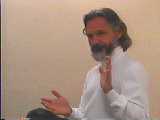 |
|||||||||||
 |
|||||||||||
 |
|||||||||||
 |
|||||||||||
 |
|||||||||||
 |
|||||||||||
 |
|||||||||||
 |
|||||||||||
 |
|||||||||||
 |
|
|
|
|
||||||||||||||||||||||||
|
Why Does Reciprocal Teaching Improve Student Understanding? November 10, 1998
We have been studying concepts and principles about learning and thinking. In our first class discussion on the topic, I introduced the idea of "learning as conceptual change," and defined learning as a constructive process in which individuals develop understanding by examining new information in light of their current knowledge and beliefs. Since then, you have read and written about key aspects of learning and thinking, and we have discussed these at length in class. The concepts and principles about learning are tools you can use to analyze learning dilemmas and problems. We have been practicing this by trying to analyze Arlene Thompson's 7th grade class in terms of these principles and ideas. The goal is to develop your to analyze and evaluate the relationship between teaching and learning.
Today, we put this ability to the test by focusing on the relationship between one method of teaching and how it influences student understanding. The method is called Reciprocal Teaching, and as you shall see it has a very strong effect on student understanding. Although I will explain the method, I will not tell you why it works. That will be your job—you will engage in a careful analysis of Reciprocal Teaching and explain why it has a strong effect on students' understanding. The analysis should be built on the concepts and principles of learning we have examined in this unit of the course. Your explanation should connect each of the four Reciprocal Teaching skills—questioning, clarification, prediction, and summarizing—to understanding. It might be best to begin by reviewing the concept of understanding and then explain how each skill and the overall method affect understanding.
Here is the format for the class period: 1.What is Reciprocal Teaching? Dr. Cerbin describes Reciprocal Teaching. 2.Why Does Reciprocal Teaching Improve Student Understanding? Each student writes an answer to the question on the attached sheet. Hand this in at the end of class. 3.Work in groups to develop the best explanation. Elect someone to record your group's answer and hand it in at the end of class. Write the group's answer on newsprint, and tape it up in class. 4.As a class we will evaluate the explanations of each group.
|